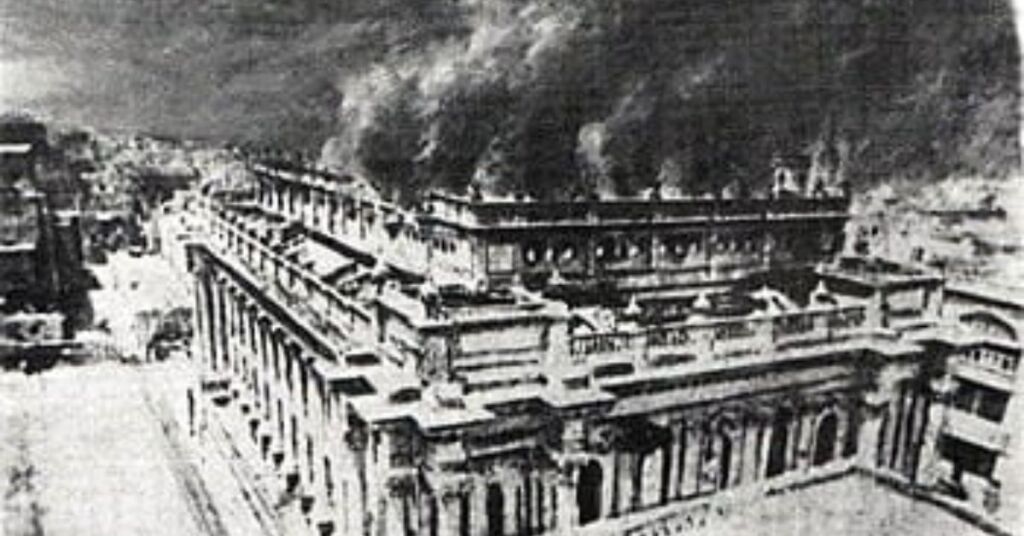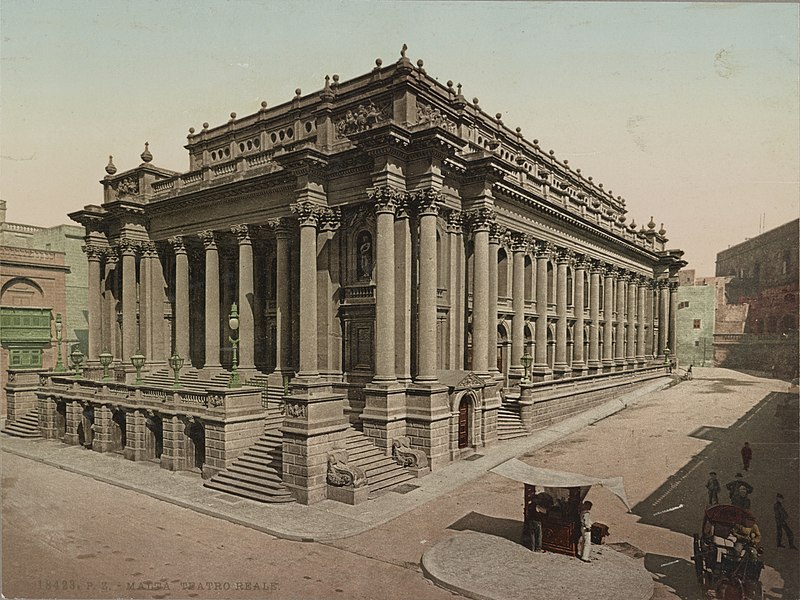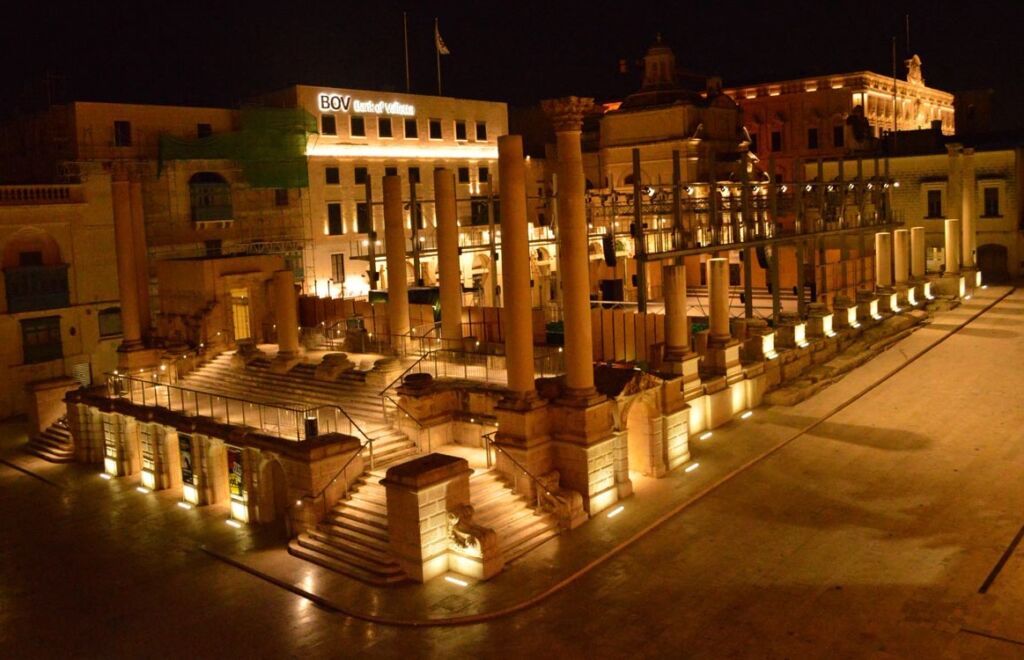What Happened Exactly? The First Fiery Destruction Of Valletta’s Teatru Rjal

As debate about the Royal Theatre resurges after former Prime Minister Lawrence Gonzi’s recent comments on the motivation behind leaving the theatre without a roof, Lovin Malta takes a nostalgic look at this version of the theatre that very few are left to remember.
It-Teatru Rjal was an opera house and performing arts venue in Valletta, Malta. It was designed by the English architect Edward Middleton Barry and was erected in 1866.
It was a magnificent building which highlighted the grandiosity of Valletta but, unfortunately, tragedy struck very quickly.

By Photoglob Co., publisher
In 1873 a fire broke out (cover photo) that extensively damaged the interior but it was eventually restored by 1877, opening with Verdi’s Aida.
This didn’t last long as in 1942, during World War II, a direct hit from an aerial bombing raid completely pulverised it.
“On the evening of Tuesday, April 7, 1942, the theatre was devastated by Luftwaffe bombers. The next morning a people hardened by aerial bombing inspected the remains of their national theatre…. The portico and the auditorium were a heap of stones, the roof a gaping hole of twisted girders. The rear end starting half way from the colonnade was however intact.” Bonnici, Joseph; Cassar, Michael (1990). The Royal Opera House – Malta

By Russell, J E (Lt) - Royal Navy official photographer
In the 1980s contact was made with the architect Renzo Piano to design a building to be constructed on site and to rehabilitate the entrance of the city.
Piano submitted the plans which were approved by the Government in 1990 but work never started.
In 2006 the government announced a proposal to redevelop the site for a dedicated House of Parliament, which by then was located in the former Armoury of the Grandmaster’s Palace in Valletta.
The proposal was not well received since it had always been assumed that the site would eventually be developed into something that would house a cultural institution; however, Piano was again approached and started to work on new designs.
The proposal was ostensibly shelved until after the general elections of 2008 and, on 1st December 2008, Gonzi revived the proposal with a budget of €80 million.
Piano dissuaded the Government from building a Parliament on site of the Opera House, instead planning a House of Parliament on present-day Freedom Square and a re-modelling of the city gate. Piano proposed an open-air theatre for the site.

By Continentaleurope at English Wikipedia, CC BY-SA 4.0
This radical redesigning of the site has been very controversial since it removed the City Gate, built a large House of Parliament in a previously public space and left a roofless theatre still a ruin.
Gonzi discussed the reasoning behind these decision making processes that took place during his tenure in an interview with radio host Andrew Azzopardi on 103.
Photo Credits: Cover Joseph Abela- Nostalgia Malta
By Photoglob Co., publisher –
By Russell, J E (Lt) – Royal Navy official photographer
Do you agree with the decision to make a roofless theatre?
